Advanced AFAR-radars for front-line and prospective MiGs: unprecedented potential for upgrading video conferencing (part of 1)
DETAILS OF THE WESTERN COURSE ON UPDATING ON-BOARD RADAR RADAR SIGHTING COMPLEXES FOR A TACTICAL DEFENSE Aviation
An integral part of the complex modernization of tactical fighters of the 4 generation to the level of machines with “two pluses” is the integration of modern on-board radar with passive and active headlights into their on-board electronic equipment, which always requires the introduction of high-tech digital control interfaces and the transformation of information from the new RCMS. The recognized leaders in this field are the Russian, American, European, and also Chinese aerospace concerns giants, which today are conducting a multi-level modernization of the Su-30, MiG-29, F-15C, F-16C, J-10B, J-15 fighter jets , as well as the Typhoon EF-2000. Let's start with those corporations whose programs have already managed to distinguish themselves as the greatest export success, and demand among domestic customers, some of whom are involved in working on these contracts. Anyway, but the favorite today is the staff company Northrop Grumman, which supplies modern on-board radars from Lockheed Martin as part of the external and internal sales of the upgraded F-16C / D and upgraded F-16A / B modifications.
So, for example, on January 16 of 2017, the ambitious 144 upgrade program of the F-16A / B Block 20 fighter 16, which is in service with the Taiwan Air Force to the F-1V level, was launched at the facilities of the Taiwanese company Aerospace Industrial Development Corporation in Taichung. The modernization contract was concluded between the Ministry of Defense of Taiwan and Lockheed Martin 2012 on October 16. It provides for the enhanced re-equipment of the F-83A / B to a more advanced digital circuitry, advanced pilot cockpit indicator equipment, as well as onboard systems, including the AN / APG-XNUMX SABR (with the synthesized aperture mode) onboard AFAR-radar, new widescreen LCD MFI for the withdrawal of tactical information, a modern high-performance on-board computer and a new integrated electronic warfare station. The successful signing of this contract was facilitated by many years of military-political tensions between Taipei and Beijing, which was established due to disagreements over the territorial identity of Taiwan. In connection with this situation, the security department of the latter began implementing numerous defense programs to protect against possible "expansion" of the PRC.
The second customer of a similar upgrade package for their F-16C was the Singapore Defense Ministry. Despite more or less normal relations with China, the richest city-state of Southeast Asia maintains very close political and defense ties with the United States, Great Britain and Australia, which are among the main participants in the "anti-Chinese axis." For this reason, Singapore pays maximum attention to the combat potential of its Air Force, armed with which the 32 heavy tactical fighter of the 4 ++ generation F-15SG already consists. The vehicles are equipped with a powerful radar with AFAR AN / APG-63 (V) 3 with a detection range of typical targets 165 km, and by total characteristics they correspond to Qatari and Arabian modifications F-15QA and F-15SA. As for the Singaporean F-16C / D improvement contract, it will update the 32 single-seat F-16C and 43 twin-seat F-16D in the amount of 914 million dollars. The third verified customer can be the Republic of Korea Air Force, which 22 of October 2015 signed with Lockheed Martin a contract to upgrade X-NUMX F-134 Block 16 fighters to F-32V worth 16 billion. A set of options similar to the Taiwanese contract. Thus, only the Taiwanese, Singaporean and South Korean contracts for the renewal of 2,7 “Falcons” are already estimated at 353 billion dollars, without taking into account the possibility of starting such work to re-equip the Polish, Danish, Turkish air forces, etc. What does the promising radar with AFAR AN / APG-7,1 SABR multi-purpose fighter F-83A / B / C / D.
Firstly, it is a significantly longer range for detecting air targets: an object with 2 m2 EPR can be detected and escorted by 150-160 km at a distance and captured at a distance of about 125 km. Accompanied by much smaller targets than the usual airborne radar with a slit antenna array (RAD) AN / APG-66. Modern high-performance computing base AN / APG-83 SABR allows each AFM AFAR (or MRP groups) to operate at its own frequency, simulating a complex radiation pattern in LPI mode (“low signal interception capability”) for outdated birch SPOs. Also AFAR has many times higher noise immunity and resolution when scanning water / sea surface in the synthetic aperture mode (SAR). The station of the previous generation AN / APG-68 (V) 9, although it has the SAR mode, its resolution is very mediocre and does not allow to classify small ground targets, based on their geometric features.
Secondly, AN / APG-83 has a much higher bandwidth (in SNP mode no less than 20-30 VC), target channel (8 simultaneously fired targets), as well as hardware adaptedness for using part of the receiving-transmitting modules AFAR as emitters radio interference. The latter option also found use in the AN / APG-81 radar of the X-Numx generation F-5A fighter. Thirdly, as each radar with active AFAR, AN / APG-35 has many times greater reliability (time between failures). And even after the failure of an anti-personnel unit, the effectiveness of the station remains at a level that allows the combat mission to be completed. All radar AN / APG-83 SABR, entering the external and internal markets of weapons, are at the level of EMD initial alert, which is fully consistent with large-scale production of products.
Similar programs are being conducted by European groups of companies specializing in aerospace technology. Such programs include the design and development of promising AFAR-radar "Captor-E". The works involve well-known European companies Selex Galileo, Indra Systems and EADS Defense Electronics (Cassidian), united in the Euroradar consortium. The Captor-E station was designed specifically to replace the aging radar with the Captor-M ECR-90 “Captor-M” on the EF-2000 “Typhoon” multi-purpose tactical fighter jets, which are in service with the air forces of the European states of the Arabian Peninsula ; it will also be installed on new versions of the IPA5 / 8 machine.
Tactical and technical parameters of the new radar, in comparison with the previous “Captor-M”, are unique not only in the Typhoon modernization line, but also among American programs for implementing AN / APG-63 (V) 3 and AN / APG-83 SABR in the Iglo and Falconov avionics. “Captor-E” has a rare technical feature for AFARs: the antenna array is not fixed on a fixed module, but is equipped with a specialized azimuth turning mechanism, due to which the viewing sector in the azimuth plane is 200 degrees, which is 80 degrees more than that of the “Raptor” one Radar AN / APG-77. The new “Keptor” can “look into” the rear hemisphere, which no known on-board radar with AFAR, except for radar with passive HEADLIGHTS, is capable of today. Moreover, fighter-type targets (2-3 and 2 EPR) will be detected by the “Captor-E” radar at a distance of 220-250 km, which is by far the best indicator among airborne radars for light multipurpose fighters. At the moment, prototypes of this station are being tested at British Typhoon, and their results are quite successful, which already in the near future promises Euro-Radar multibillion-dollar contracts in the European and Asian markets.
Do not lag behind in the update programs of their “light aircraft fleet” of front-line fighters and Swedes. SAAB, for example, in 2008, announced the launch of the development of the promising 4 ++ fighter of the JAS-39E Gripen-NG. In addition to the modules of the highly advanced high-speed tactical information exchange system CDL-39, new fighters will receive a promising airborne radar with AFAR ES-05 "Raven" (in the photo) from the Italian company "Selex ES". The station will be represented by more than 1000 MRP, capable of implementing all the modes of operation known for AFAR, including the creation of energy “dips” of the radiation pattern in the direction of the enemy’s electronic warfare means. Similarly, the radar “Captor-E”, “Raven” will provide the system with mechanical adjustment of the antenna array, which will bring its viewing area to 200 degrees, allowing you to “look” 10 degrees into the rear hemisphere of the machine, providing firing “over the shoulder”. Naturally, the target detection range in this mode will be less in 3-4 times due to strong energy losses of the receiving-transmitting aperture area of the radar complex. The ES-05 “Raven” on-board radar is capable of detecting a target with an 3 2 EPR at a distance of 200 km with simultaneous tracking of 20 airborne objects. The station has a liquid and air cooling system.
Behind the Raven radar antenna module (on the upper surface of the fuselage nose, in front of the cockpit canopy), one can see the fairing of the Skyward-G optical-electronic sighting system developed by Leonardo Airborne & Space Systems. According to the information from the advertising sheet, the sensor is bispectral and operates in 2 main infrared ranges of 3-5 microns and 8-12 microns. The first range is shorter wavelength and allows excellent selection of targets with a low infrared signature against the background of surrounding objects (trees, structures, relief details); the range of this range is not as high as that of the long-wave. The range of 8-12 microns does not have the ability to realize high-quality selection of small-sized targets with a low IR signature, but its range of action is much greater than that of the former.
The Skyward-G / SHU optical-electronic sighting system has 4 viewing mode: narrow angle (8 x 64 hail), medium angle (16 x 12,8 hail), wide angle (30 x 24 hail), it implements visualization of the accompanied object, and also common mode, which covers 170 grad in the azimuth plane and 120 grad in elevation. The power of the air-cooled OLPC Skyward-G reaches 400 watts. The station accompanies up to 200 targets in air-to-surface and air-to-air modes.
MODERNIZATION OF RUSSIAN "TACTICS" OF THE MIG-29 FAMILY: WORKING IS, BUT THE EMBODIMENT "IN IRON" IS DELAYED
As we can see, in Western corporations things are progressing relatively successfully and with constant positive dynamics; and this does not take into account the fact that at least 300 F-16C / D units in service with the US Air Force are being upgraded with new radars, after which these fighters will completely surpass our MiG-29С / СМТ and Su-27ММ in long-range air combat mode. How can we respond to such ambitious state programs? What asymmetric measures is being worked out by the Russian Defense Ministry to eliminate the dangerous tendency to lag behind the AFARization of the combat units of the USAF fighter aviation? These questions are very urgent, relating to the rank of strategic.
As you know, on January 27 of 2017 in the Moscow region of Lukhovitsy, an international presentation of the most advanced version of the light tactical fighter MiG-35 "Fulcrum-F" was successfully held. Despite the fact that the machine does not belong to the 5 generation, special attention was paid to the representatives of the American and European media. And this is absolutely not surprising, since the MiG-35 is the only Russian multi-purpose light-class fighter capable of achieving complete superiority over Rafahl, Typhoon, F-16C Block 60, F-15SE “Silent Eagle”, F / A-18E / F and even any F-35 "Lightning-2" modification. Moreover, according to statements by the BKS Commander-in-Chief of Russia Viktor Bondarev and information from other sources, approximately 140 of the 170 serial MiG-35 will receive promising airborne radar with an active phased array of the Beetle family. Such a number of these machines is enough to change the balance of power in their favor in any air direction (HV) East European theater; Yes, and in the closest air combat, the MiG-35 will be overcome by any NATO multipurpose fighter. At the beginning of our previous material, we already said that without taking into account the range, the combat potential of the MiG-35 with promising radar stations is one step ahead of that of heavy Su-30CM: Falkrum speed is higher on 0,25M (about 2450 against 2150 km / h), afterburner 11% higher traction (2647 vs. 2381 kgf / m2), which means that the MiG accelerating qualities are much higher. Moreover, the crew of the MiG-35 will be able to more quickly and reliably fix the suddenly emerging air threats, and then also quickly eliminate them, which the crew of the Su-30CM will not be able to do.
The fact is that on the lower surface of the left nacelle and on the gargrote the MiG-35 contains high-resolution opto-electronic sensors NS-OAR (for viewing the lower hemisphere) and Sun-OAR (for viewing the upper hemisphere), combined into a common detection station the attacking SOAR missiles, operating in the TV band, and capable of detecting enemy EASOs at a distance of 30 km, and escort to 5-7 km. This station will transmit the coordinates of threatening missiles to the fighter’s computerized SLA, and then to air combat missiles of the P-73RMD-2 or P-77 (RVV-AE) type, capable of intercepting other missiles of a similar class. Also, in addition to the standard nose optic-electronic aiming complex OLS-UEM, an overhead container with a turret is installed on the right-hand nacelle, in which an auxiliary complex OLS-K is installed, designed to observe surface and ground objects in the lower and rear hemispheres. Such a variety of optical-electronic sighting sights on the "Dryers" today can not be found - hence the high interest. On the electronic filling machine is close to the 5-th generation. But is everything as good as it seems at first sight?
Firstly, the 140 MiG-35 with new radars is not the number that will be enough to fully cover all possible theaters near our borders on the Eurasian continent, because in the Far Eastern operational direction alone we can withstand: 65 modern tactical fighter of the 4 ++ generation F-2A / B, 42 Fighter X-NUMX-generation F-5A Japanese air force, as well as several F-35A fighter squadrons deployed at the Elmendorf-Richardson airbase, and this is not counting the US Navy carrier fighter aircraft, which can It is to be transferred in an amount 22-3-x hundred units Western Pacific. The situation is similar in the northwestern as well as in the western UN, where the numerical superiority of the modernized F-4A / B / C / D and "Typhoon", which are in service with European countries, and the promising F-16A / B, which are will be purchased by Norway, the UK, the Netherlands and Denmark. It turns out such a "picture" that technologically MiG-35 is equivalent to approximately 35-2 F-3C Block 16 + or 52 "Typhoon", but the total number of our "MiGs" will be 2 - 3 times less than the new fighters from the US allies in the APR and Europe, which will not allow not only to achieve domination, but also to equalize the balance of power. The issue requires immediate resolution, and it is necessary to act in the same manner that Lockheed Martin uses - by updating the existing fleet.
At the moment, in the combat units of the VKS of Russia, there are about 250 multi-purpose front-line fighters MiG-29С / М2 / СМТ and UBT, as well as several hundred machines of the 9-12 and 9-13 modification on preservation. The most advanced modifications among them are the MiG-29CMT of different variants (“Products 9-17 / 19 / 19Р”), present in the number of 44 units, as well as the MiG-29М2. These fighters belong to the generation of "4 +" and are equipped with onboard radar H019MP Topaz and H010MP Zhuk-ME. The stations are built around a modern digital data interchange bus in the MIL-STD-1553B standard avionics architecture and have hardware support for the Synthetic Aperture Mode (SAR) with an additional GMTI (Ground Moving Target Indicator) detection and tracking mode at speeds up to 15 km / h. The radar data functionality is similar to the American stations AN / APG-80 and AN / APG-83 SABR for bundling Falcons, but there are significant differences between them. If the state-owned products have long been built on the basis of active phased arrays with electronically controlled beam, our improved Topaz and Beetles are represented by mechanically controlled slotted antenna arrays, which means that there are such disadvantages as:
- low resolution in the mode of the synthesized aperture and tracking of the moving ground targets (GMTI), constituting 15 meters, while the centimeter AFAR-radar in this mode gives resolution 1-5 meters, which is achieved by a large number of individually controlled receiving-transmitting modules, able to form the most complex spatial pattern configurations;
- low bandwidth on the number of routes followed by air targets (the radar H019MP and H010MP can accompany no more than 10 air objects on the aisle); stations with AFAR can accompany from 20 to 30 and more;
- low target channel, which for the H019MP Topaz is only 2 simultaneously fired with Р-77 (РВВ-АЕ) missiles, and for the Х010П Zhuk-ME - no more than 4 goals, while the airborne radar with active and passive HEADLIGHTS are capable of “capturing” on accurate auto tracking and simultaneously firing from 8 to 16 targets;
- the impossibility of forming “failures” in the directivity pattern for the area of space in which the electronic countermeasures of the enemy are functioning, because of this, stations with AARs have extremely low noise immunity from such advanced EW aircraft as F / A-18G;
- the lack of simultaneous operation in air-sea / ground modes, as well as air-to-air modes, due to which the pilot and the system operator lose momentary awareness of the tactical situation at the same time on the ground and air sectors of the theater of military operations; AFAR and PFAR have this feature.
Approximately such a list of tactical and technical deficiencies exists today in the “baggage” of our combatant MiG-29CMT and MiG-29М2, the number of which in units barely exceeds 50-60 units. Their on-board radar complexes Topaz and Zhuk-ME have the only plus — increased pulse power, due to which the range of target detection with EPR 3 м2 increased from 70 to 115 km, which is an excellent increase for a conventional WAR; but this is not enough for long-range combat with European and American F-16C, equipped with SABR radar.
The remaining vehicles of the MiG-29C modification, in the amount of slightly more than 100 units, have an even more outdated “stuffing” built around the SUV-29С armament control system with an integrated radar sighting system RLPK-29М. This complex is represented by an early version of the H019M Topaz radar, which does not have hardware support for ground targets, and also has a standard energy potential that allows detecting targets with 3X2 EPR at 70 km distance and “capturing” only 2 aerial targets. The weapons control system SUV-29С is adapted for the use of air combat missiles Р-77, but due to the low capabilities of the НHNUMXМ radar, the MiG-019С can be opposed only to those F-29C “blocks” that did not pass the modernization program and are carried on board Old-fashioned AN / APG-16 slot radars with a fighter-type target detection range on the order of 66-60 km. Even the modification of the F-65C / D Block 16 +, which the Polish Air Force has, is likely to be outdated by the outdated RLPK Н52М MiG-019С fighter, especially since the Poles have long acquired a modification of the URAVV AMRAAM with the AIM-29C-km increased to 120 km 120, and such F-7C in Poland alone 16 units.
The conclusion is this: the situation with the perfection of the onboard radio-electronic equipment of light front-line fighter jets of the VKS of Russia MiG-29С, and to a certain extent MiG-29СМТ / М2, is really critical. With all the perfection of the airframe and the power plant, allowing to win the closest air combat from any western 4 fighter and even 5 generations, our serial MiGs are completely vulnerable to any other threat from the modern network-centric theater of operations. Some may argue that such machines as Su-27СМ, Su-30СМ, and also Su-35С can completely correct this situation, but this opinion is not entirely objective. Heavy tactical fighters, especially the Su-35S, are more designed to create a powerful air defense line and gain air superiority at long-distance approaches to the air borders of the state, as well as to accompany DRLOI airplanes, air command posts, and military transport aircraft from enemy fighters 4- go and 5-th generations. They can also successfully carry out long-range anti-ship and anti-radar missions using X-31AD and X-58USHKE missiles. We don’t have enough of these machines to close all the technological “gaps” observed in the sector of light front-line aviation, and especially with the current production rates of T-50 PAK-FA.
The issue can be resolved by re-equipping all the MiG-29 VKS being in service with promising on-board radars developed by Fazatron-NIIR JSC and its subsidiary Concern Radio-Electronic Technologies. The main applicants are the multi-channel airborne radar Zhuk-AE and Zhuk-AME; these products embody the most advanced developments of the Russian defense industry in the area of the AESA, and according to this, they are already ahead of all that used in the H011 Bars and H035 Irbis-E stations of the multipurpose Su-30CM and Su-35С fighters, with the exception of range of action.
The procedure for unifying new radars with OMS of more modern MiG-29CMT and MiG-29М2 will be carried out under a lightweight scheme, since these aircraft were originally developed using the multiplex data bus of the MIL-STD-1553B standard, the same bus with an open architecture forms the basis of the tactical weapons control system MiG-35 fighter. As for the older MiG-29S, here you will need a complete replacement of the electronic "core" of fighter control, built around the old BTsVM Ts101M, which is not designed to work in conjunction with the next-generation digital interfaces "Zhukov". There is a real chance to radically modernize and “put on the wing” several hundred front-line and “mothballed” MiG-29А / С, which completely eliminates the technical backlog of the entire fleet of light front-line aviation from foreign fighters of the 4 ++ generation. What are the features and advantages of promising airborne radar "Zhuk-AE" and "Zhuk-AME"?
The first, “Beetle-AE” (FGA-29), was developed from the 2006 year on the basis of developments obtained by “Phazatron” during the design of a not very successful early model “Beetle-AME” (FGA-01), having an impermissibly large mass in 520 kg. The new product is widely used compact and lightweight monolithic integrated circuits (MIS), which today can be found in any modern digital device. The aperture diameter of the Zhuk-AE AFAR was reduced to 500 mm (total diameter - about 575 m), in comparison with the 700-mm FGA-01 web; This was done to better match the internal diameter of the radio transparent fairing of the “154” prototype board (MiG-29М2), on which the new station was tested. The FGA-29 canvas is represented by 680 receiving and transmitting modules with 5 W power, which is quite enough to realize 50 cm resolution at a distance of up to 20 km and 3 m at a distance of 30 km. The station's pulsed power is 34 kW, which makes it possible to detect targets with 3 m2 EPR at a distance of up to 148 km to the front hemisphere and to 60 km to the rear hemisphere (in pursuit). Beetle AE accompanies air targets on the 30 aisle and simultaneously captures 6; in the mode of close air combat, the so-called “Swivel” mode can be used, which operates when synchronized with the helmet-mounted target designation system of the pilot or system operator.
Thanks to the individual control of the operating frequencies of individual APMs (or their groups), as well as a more sensitive and interference-free transducer of electromagnetic waves reflected from the target, Zhuk-AE has a very significant advantage over other airborne radars - a slight decrease in the detection range of air objects against the earth's surface totaling 8-11%, for radar with PFAR, this figure is about 15-18%, as proved by the tests of the Irbis-E radar operating in the broad sector of the review: VTs with EPR 3mXNU MX was detected at a distance of 2 km (against the background of free space), and 200 km (against the background of the earth's surface). Even here we can see a noticeable plus radar with AFAR.
High performance of the “ZHUK-AE” is also noted when operating in air-sea / ground mode: a heavy armored vehicle group, or an artillery self-propelled artillery can be detected at a range of 30-35 km, a surface ship of the corvette class - 150 km and “ destroyer "- more than 200 km. The air-to-surface mode has several dozen sub-modes, including a synthesized aperture, the ability to freeze the terrain map with all detected surface objects, detecting and tracking moving units (GMTI), measuring the speed of the carrier in accordance with the speed of displacement of stationary objects in the fighter's coordinate system, following the terrain at near-sonic speeds, which is used in the "breakthrough" air defense of the enemy. The radar review sector is standard for fixed AFAR apertures and is 120 degrees in the azimuth and elevation planes, which is a drawback with mobile AFAR stations, for example, “Captor-E”, but the mass of the RLC is only 200 kg, which is ideal for upgrading light MiG-29С / СМТ / М2. The total capabilities of Zhuka-AE are between the American AN / APG-80 and AN / APG-79 radars, which are equipped with the F-16C Block 60 and F / A-18E / F "Super Hornet". Modernization of the existing MiG-29C / SMT radar "Zhuk-AE", as well as more advanced optical-electronic complexes OLS-UEM and modern information field of the cockpit will provide an opportunity to significantly outperform the Polish F-16C Block 52 + and the German "Typhoons", equipped with outdated radars with a slit antenna array. At the same time, the lag behind the “Typhoons” with the radar “Captor-E”, as well as the F-35A will be significant. MiGs will need an even more powerful airborne radar with an active phased array antenna, the Zhuk-AME.
This station was first presented at the “Airshow China-2016” aerospace exhibition in Chinese Zhuhai in 2016. The Zhuk-AME receiving and receiving modules are manufactured using a completely new technology, based on three-dimensional microwave conductors generated in the process of low-temperature co-fired LTCC ceramics ("Low Temperature Co-Fired Ceramic"). The birth of super-strong crystalline structure of conductors occurs as a result of burning of a multicomponent mixture of special glasses, ceramics, as well as special conductive pastes based on gold, silver or platinum, which in certain proportions are added to this mixture. These APM have many advantages over the standard arsenide-gallium elements used in most well-known radar with AFAR (Japanese J-APG-1, "Captor-E", etc.), and in particular:
- excellent mechanical stability, achieved by a low coefficient of thermal expansion and high elasticity in a wide range of operating temperatures, these qualities are the basis of a long service life of the APM;
- stable electrically conductive indicators in all frequency ranges of waves, up to the millimeter Ka-band, due to which there is a great stability of AFAR operation in several modes at once, including EW;
- the density of the ceramic base of PPM made by LTCC technology ensures the tightness of the conductor elements from the negative effects of the external environment, in other words, the Beetle AME can continue to work even in case of damage to the radio transparent radar nose radome;
- higher thermal conductivity of LTCC ceramic substrates, in comparison with organic analogues (4 W / MK against 0,1-0,5 W / mK, respectively), makes it possible to more efficiently cool the most high-temperature zones of PPM, especially when using metal heat sinks;
- the process of creating such PPMs does not require high firing temperatures, all that is enough is 850-900ºС.
In the case of LTCC technology, low-temperature co-fired ceramics is a low-profile dielectric substrate for platinum, gold, or silver RL-wavelength emitters / receivers. It is much more heat-resistant than conventional printed circuit boards made of organic compounds and allows you to work with an increased energy potential: the receiving and transmitting modules of AFU Zhuk-AME can have a power of the order of 6-8 W. This led to the fact that the promising radar "Zhuk" increased the target detection range with the 3 m2 EPR to about 220-260 km, which is comparable to the station "Captor-E". According to the statements of “Phasotron”, “Beetle-AME” was developed both for installation on fighter jets of the “4 ++” MiG-35, and on the MiG-29С / СМТ. The antenna module, along with the web and loops, has a mass of the order of 100 kg, which is an unprecedented indicator among Western fighters. Cloth station represented 960 MRP.
High-resolution high-resolution “Beetle-AME” modes of operation make it possible to accurately classify sea, land and air objects by their shape and radar signature due to comparison with a loaded reference base of hundreds or even thousands of units. Moreover, the target can be identified from a small distance, when the SAR mode has a resolution of 50 cm, or in the case when the target is radio-emitting. Then the base of the frequency templates of numerous enemy radar facilities is used, which can be integrated into the updated SPO of the upgraded MiG-29. The Beetle can operate in LPI mode, to complicate the work of the enemy EW, or in the passive mode - for covert access and attack on the enemy’s radio-emitting targets, among which may be ground-based or multifunctional radars of anti-aircraft missile systems and RTR stations and EW air-based.
To be continued ...
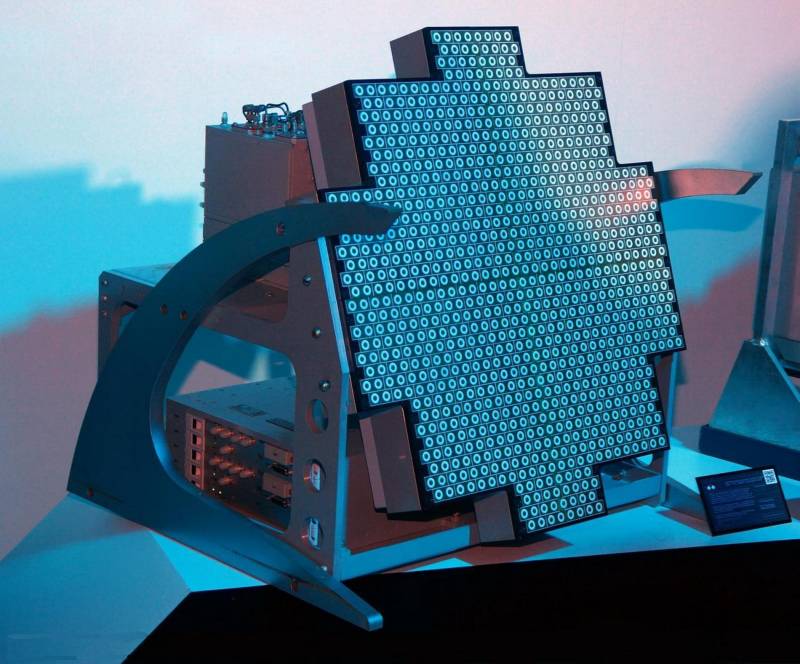
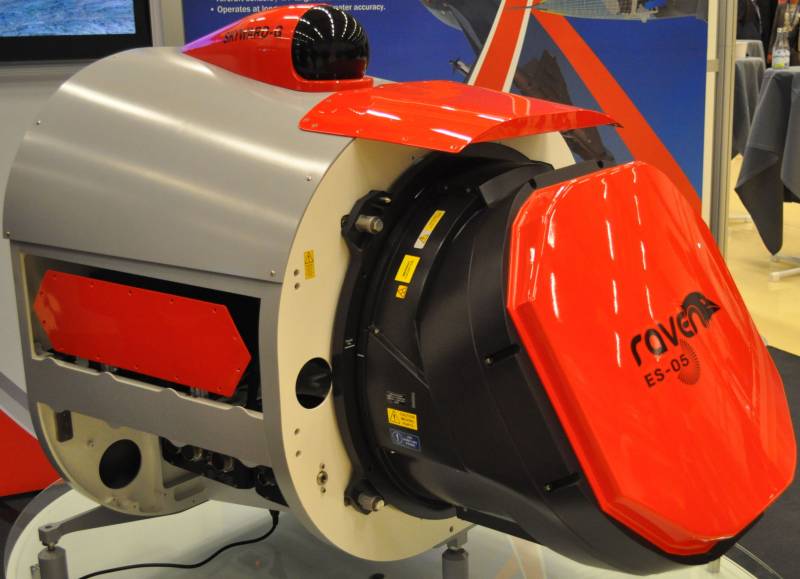
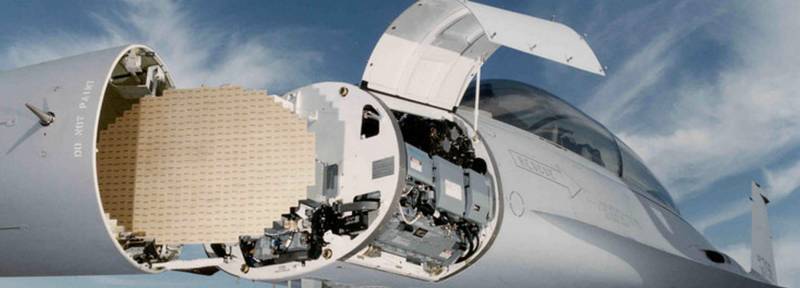
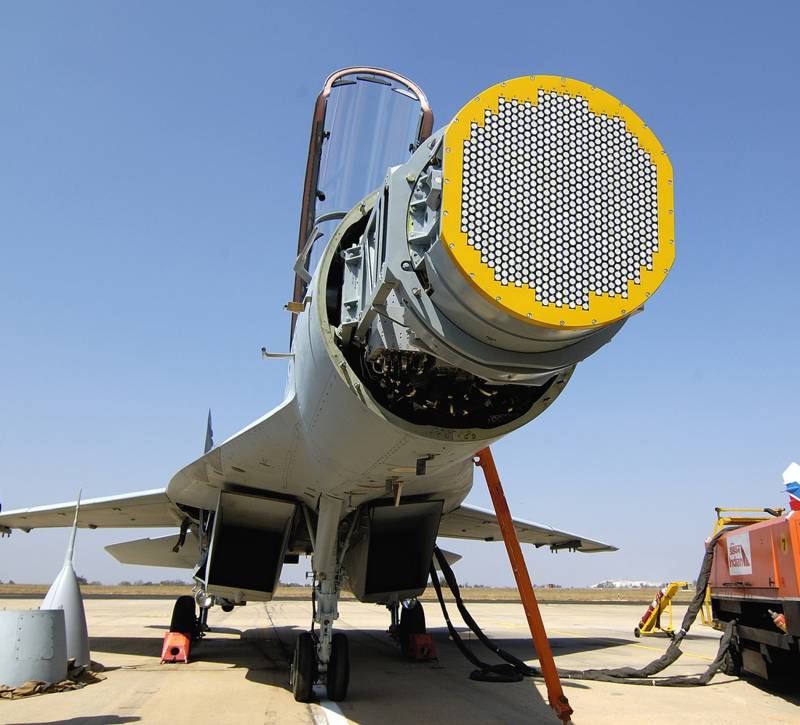
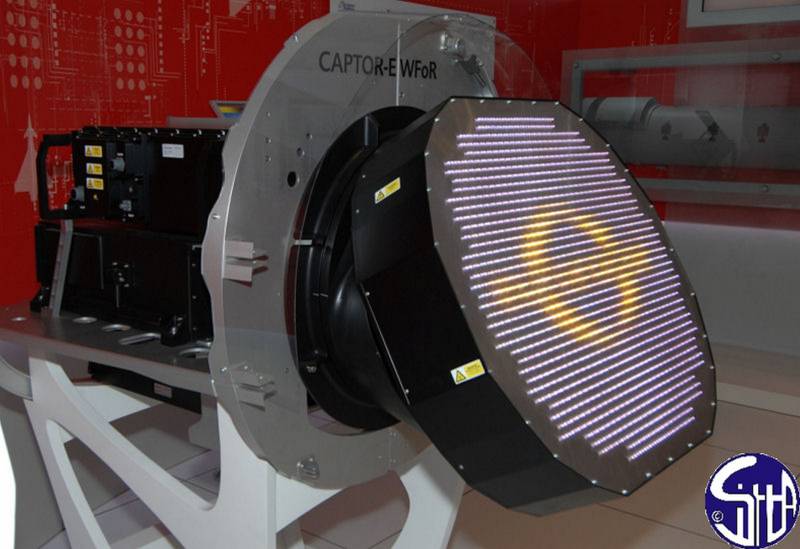
Information